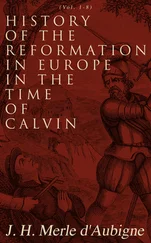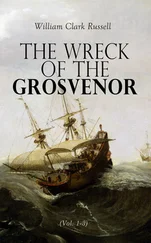William Clark - History of the Expedition under the Command of Captains Lewis and Clark, Vol. I.
Здесь есть возможность читать онлайн «William Clark - History of the Expedition under the Command of Captains Lewis and Clark, Vol. I.» — ознакомительный отрывок электронной книги совершенно бесплатно, а после прочтения отрывка купить полную версию. В некоторых случаях можно слушать аудио, скачать через торрент в формате fb2 и присутствует краткое содержание. Жанр: Путешествия и география, История, foreign_edu, foreign_antique, foreign_prose, на английском языке. Описание произведения, (предисловие) а так же отзывы посетителей доступны на портале библиотеки ЛибКат.
- Название:History of the Expedition under the Command of Captains Lewis and Clark, Vol. I.
- Автор:
- Жанр:
- Год:неизвестен
- ISBN:нет данных
- Рейтинг книги:5 / 5. Голосов: 1
-
Избранное:Добавить в избранное
- Отзывы:
-
Ваша оценка:
- 100
- 1
- 2
- 3
- 4
- 5
History of the Expedition under the Command of Captains Lewis and Clark, Vol. I.: краткое содержание, описание и аннотация
Предлагаем к чтению аннотацию, описание, краткое содержание или предисловие (зависит от того, что написал сам автор книги «History of the Expedition under the Command of Captains Lewis and Clark, Vol. I.»). Если вы не нашли необходимую информацию о книге — напишите в комментариях, мы постараемся отыскать её.
History of the Expedition under the Command of Captains Lewis and Clark, Vol. I. — читать онлайн ознакомительный отрывок
Ниже представлен текст книги, разбитый по страницам. Система сохранения места последней прочитанной страницы, позволяет с удобством читать онлайн бесплатно книгу «History of the Expedition under the Command of Captains Lewis and Clark, Vol. I.», без необходимости каждый раз заново искать на чём Вы остановились. Поставьте закладку, и сможете в любой момент перейти на страницу, на которой закончили чтение.
Интервал:
Закладка:
Tuesday, October 2. There had been a violent wind from S.E. during the night, which having moderated we set sail with Mr. Valle, who visited us this morning and accompanied us for two miles. He is one of three French traders who have halted here, expecting the Sioux who are coming down from the Ricaras, where they now are, for the purposes of traffic. Mr. Valle tells us that he passed the last winter three hundred leagues up the Chayenne under the Black mountains. That river he represents as very rapid, liable to sudden swells, the bed and shores formed of course gravel, and difficult of ascent even for canoes. One hundred leagues from its mouth it divides into two branches, one coming from the south, the other at forty leagues from the junction enters the Black mountains. The land which it waters from the Missouri to the Black mountains, resembles the country on the Missouri, except that the former has even less timber, and of that the greater proportion is cedar. The Chayennes reside chiefly on the heads of the river, and steal horses from the Spanish settlement, a plundering excursion which they perform in a month's time. The Black mountains he observes are very high, covered with great quantities of pine, and in some parts the snow remains during the summer. There are also great quantities of goats, white bear, prairie cocks, and a species of animal which from his description must resemble a small elk, with large circular horns.
At two and a half miles we had passed a willow island on the south, on the north side of the river were dark bluffs, and on the south low rich prairies. We took a meridian altitude on our arrival at the upper end of the isthmus of the bend, which we called the Lookout bend, and found the latitude to be 44° 19' 36". This bend is nearly twenty miles round, and not more than two miles across.
In the afternoon we heard a shot fired, and not long after observed some Indians on a hill: one of them came to the shore and wished us to land, as there were twenty lodges of Yanktons or Boisbrule there; we declined doing so, telling him that we had already seen his chiefs, and that they might learn from Mr. Durion the nature of the talk we had delivered to them. At nine miles we came to the lower point of a long island on the north, the banks of the south side of the river being high, those of the north forming a low rich prairie. We coasted along this island, which we called Caution island, and after passing a small creek on the south encamped on a sandbar in the middle of the river, having made twelve miles. The wind changed to the northwest, and became very high and cold. The current of the river is less rapid, and the water though of the same colour contains less sediment than below the Chayenne, but its width continues the same. We were not able to hunt to-day; for as there are so many Indians in the neighbourhood, we were in constant expectation of being attacked, and were therefore forced to keep the party together and be on our guard.
Wednesday, October 3. The wind continued so high from the northwest, that we could not set out till after seven: we then proceeded till twelve o'clock, and landed on a bar towards the south, where we examined the periogues, and the forecastle of the boat, and found that the mice had cut several bags of corn, and spoiled some of our clothes: about one o'clock an Indian came running to the shore with a turkey on his back: several others soon joined him, but we had no intercourse with them. We then went on for three miles, but the ascent soon became so obstructed by sandbars and shoal water, that after attempting in vain several channels, we determined to rest for the night under some high bluffs on the south, and send out to examine the best channel. We had made eight miles along high bluffs on each side. The birds we saw were the white gulls and the brant which were flying to the southward in large flocks.
Thursday, 4th. On examination we found that there was no outlet practicable for us in this channel, and that we must retread our steps. We therefore returned three miles, and attempted another channel in which we were more fortunate. The Indians were in small numbers on the shore, and seemed willing had they been more numerous to molest us. They called to desire that we would land, and one of them gave three yells and fired a ball ahead of the boat: we however took no notice of it, but landed on the south to breakfast. One of these Indians swam across and begged for some powder, we gave him a piece of tobacco only. At eight and a half miles we had passed an island in the middle of the river, which we called Goodhope island. At one and a half mile we reached a creek on the south side about twelve yards wide, to which we gave the name of Teal creek. A little above this is an island on the north side of the current, about one and a half mile in length and three quarters of a mile in breadth. In the centre of this island is an old village of the Ricaras, called Lahoocat; it was surrounded by a circular wall, containing seventeen lodges. The Ricaras are known to have lived therein 1797, and the village seems to have been deserted about five years since; it does not contain much timber. We encamped on a sandbar making out from the upper end of this island; our journey to-day being twelve miles.
Friday, October 5. The weather was very cold: yesterday evening and this morning there was a white frost. We sailed along the highlands on the north side, passing a small creek on the south, between three and four miles. At seven o'clock we heard some yells and saw three Indians of the Teton band, who asked us to come on shore and begged for some tobacco, to all which we gave the same answer as hitherto. At eight miles we reached a small creek on the north. At fourteen we passed an island on the south, covered with wild rye, and at the head a large creek comes in from the south, which we named Whitebrant creek, from seeing several white brants among flocks of dark-coloured ones. At the distance of twenty miles we came to on a sandbar towards the north side of the river, with a willow island opposite; the hills or bluffs come to the banks of the river on both sides, but are not so high as they are below: the river itself however continues of the same width, and the sandbars are quite as numerous. The soil of the banks is dark coloured, and many of the bluffs have the appearance of being on fire. Our game this day was a deer, a prairie wolf, and some goats out of a flock that was swimming across the river.
Saturday, October 6. The morning was still cold, the wind being from the north. At eight miles we came to a willow island on the north, opposite a point of timber, where there are many large stones near the middle of the river, which seem to have been washed from the hills and high plains on both sides, or driven from a distance down the stream. At twelve miles we halted for dinner at a village which we suppose to have belonged to the Ricaras; it is situated in a low plain on the river, and consists of about eighty lodges, of an octagon form, neatly covered with earth, placed as close to each other as possible, and picketed round. The skin canoes, mats, buckets, and articles of furniture found in the lodges, induce us to suppose that it had been left in the spring. We found three different sorts of squashes growing in the village; we also killed an elk near it, and saw two wolves. On leaving the village the river became shallow, and after searching a long time for the main channel, which was concealed among sandbars, we at last dragged the boat over one of them rather than go back three miles for the deepest channel. At fourteen and a half miles we stopped for the night on a sandbar, opposite a creek on the north, called Otter creek, twenty-two yards in width, and containing more water than is common for creeks of that size. The sides of the river during the day are variegated with high bluffs and low timbered grounds on the banks: the river is very much obstructed by sandbars. We saw geese, swan, brants and ducks of different kinds on the sandbars, and on shore numbers of the prairie hen; the magpie too is very common, but the gulls and plover, which we saw in such numbers below, are now quite rare.
Читать дальшеИнтервал:
Закладка:
Похожие книги на «History of the Expedition under the Command of Captains Lewis and Clark, Vol. I.»
Представляем Вашему вниманию похожие книги на «History of the Expedition under the Command of Captains Lewis and Clark, Vol. I.» списком для выбора. Мы отобрали схожую по названию и смыслу литературу в надежде предоставить читателям больше вариантов отыскать новые, интересные, ещё непрочитанные произведения.
Обсуждение, отзывы о книге «History of the Expedition under the Command of Captains Lewis and Clark, Vol. I.» и просто собственные мнения читателей. Оставьте ваши комментарии, напишите, что Вы думаете о произведении, его смысле или главных героях. Укажите что конкретно понравилось, а что нет, и почему Вы так считаете.












